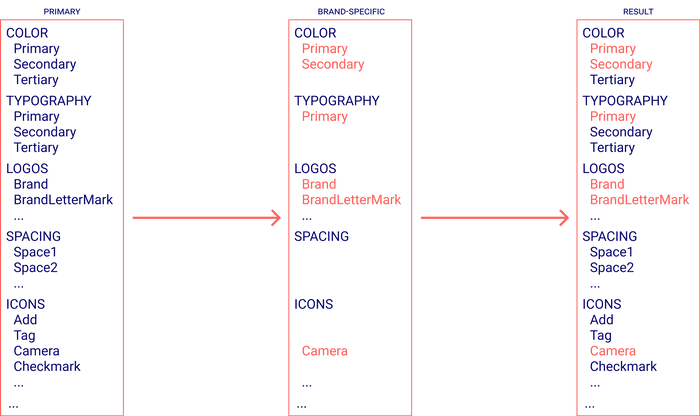about
Multibranding ()
Chameleon gets its name from its adaptability. With Mediahuis being a collection of a multitude of brands, the design system needs to support this multibranding out of the box. As a chameleon, it should easily blend in with the context it finds itself in.
Whitelabel
As discussed in Foundations, values that make up the identity of the brand, are stored in JSON values. These foundations are then converted to platform-specific tokens that can subsequently be used in components.
While a great deal of these properties contribute to the identity of the brand, a number of them don't have a clear branding value or are not regarded as vital to a brand's branding.
To not force a brand to define all needed variables, the concept of Whitelabel was born. Whitelabel is a brandless brand that disposes of all the values. These values are a set of sensible defaults that are a great starting point for most brands.
Brand extension
As said, Whitelabel is the starting point for all brands. To define a brand, it's sufficient to provide the values the brand wants to overwrite. While a brand has the freedom to overwrite every single value, brands can also provide just a single value. The values they provide, are then merged with the values defined in Whitelabel. The result is the total set of tokens, which is a mix of brand-specific values completed with the sensible defaults provided by Whitelabel.
This makes onboarding a new brand a mater of gathering the needed branded variables, running the assemly and out comes a fully functional brand. Brands can always start by providing a bare minimun (e.g. a primary color and a primary font), which will already result in usable branded components. Over time, more brand-specific overrides can be added, to further support their branding efforts.
